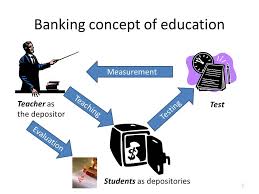Environmental Aspects of Shale Energy Presentation
On October 17, 2014, David Yoxtheimer made a presentation on the environmental implications of Marcellus shale development (hydraulic fracturing and whether or not it contaminates drinking water).
His presentation was held at the Palmer Museum of Art on the Penn State campus as part of the Marcellus Shale Documentary Project going on this fall. David Yoxtheimer is an Associate Professor of Hydrogeology at the Marcellus Center for Outreach and Research at Penn State University. With the support from the Agriculture Science Department, the Penn State Institute of Energy and Environment, David Yoxtheimer and his team examines the environmental implications of hydraulic fracturing on water zones.
He also serves as a link between the general public and energy sectors in the country. He considers himself to be pro-science and a devout environmentalist, who is concerned with minimizing the negative effects of hydraulic fracturing and maximizing its benefits.
Guest Speaker
David Yoxtheimer began his presentation by giving an overview and background of the Marcellus shale drilling in Pennsylvania. The first well was drilled in 2003 by Range Resources in Washington County with no intention of its being drilled as a Marcellus well. Pennsylvania has approximately 8000 with about 70% already online producing gas.
The image below shows the geological map of Marcellus in the United State of America, it could be seen from the image that Pennsylvania alone makes up of about 50 % of Marcellus distribution in the country.
Figure 1: Location of the Marcellus Shale
Source: http://info.drillinginfo.com/marcellus-shale-operator-highlights/
Major Development and Regulations
Over the past decade there been has enormous improvement in the development and regulations of fracking in the region. Yoxtheimer noted that 75% of new hires are from Pennsylvania (a change from the early part years of gas exploration in Pennsylvania). Another change has come in, the engineering aspects, such as how to handle well blowouts. David Yoxtheirmer gave an example of a blow out in 2010 when DEP (The Pennsylvania Department of Environmental Protection) didn’t have strict rules and regulations to monitor wells being fractured. This blow out occurred when the company drilling in Clearfield County was in the process of removing the equipment, causing about 35,000 gallons of methane and fracturing fluids to be spilled into the atmosphere for close to 16 hours. As result, the DEP now requires every company to have a well control specialist and special layers of pressure control. Also well casings have to be strengthened by using steel pipes.
The salt content (brine) was dumped into municipal waste water to use the dilution to control pollution. In western Pennsylvania, there was evidence of increasing high salinity in the water supply, and now regulations have been put in place to curb this.
Questions raised by the audience
The audience for this meeting included students, teachers and some concerned citizens of Pennsylvania with age variations as low as 19 to a high in the 70’s. The meeting was not simply a presentation but was more interactive in nature. Because the audience members were was familiar with the process of hydraulic fracturing and the negative environmental effects is said to have, it was a lively discussion.
- The audience asked about such topics as: Where he (David Yoxtheimer) gets his funding and the department he works for.
- Whether or not the oil industry is funding any of the research
- Why the name Marcellus
- Where there has been evidence of methane in drinking water. He answered methane is naturally produced in water and that methane is not toxic to the human body.
- Where the 90% of the fluids (brine water) used for fracking go.
In answering these questions, Yoxtheimer noted that during fracking about 10% of the drilling fluid used returns to the surface and 20% of it returns when the well goes online. About 90% of the returned water is recycled and used again in different wells. In his opinion, there is a net positive return because of combustion of methane generating about 2 cubic ft. of water.
The presentation addressed some concerns of the public. One that stood out was when a woman wanted to know how safe hydraulic fracturing is and whether or not the profit outweighs the negatives, David Yoxtheimer respond by drawing an analogy on how GM(general Motors ) always recalls cars for repairs yet demands for the cars has never been higher.





